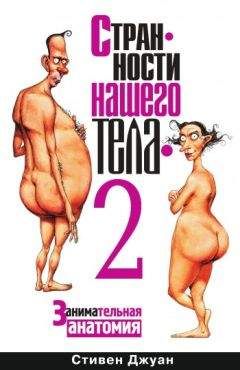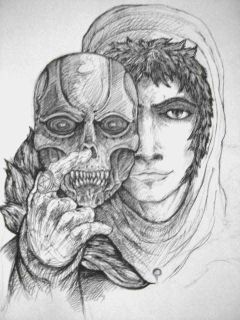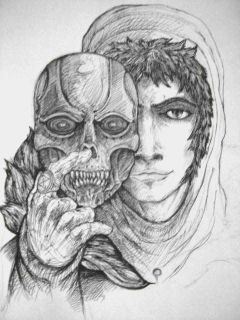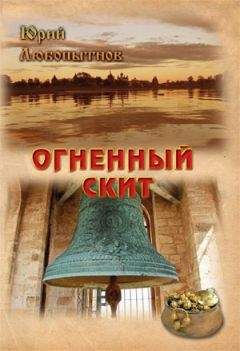4. Juan S. Cinnamon buns take the cake with smell // National Post (Toronto). 17 October 2005. Body & Health. P. 1–2.
5. Доктор Р. Джеймс Свансон работает на кафедре биологических наук, акушерства и гинекологии университета в Норфолке (Вирджиния, США).
6. Juan S. Cat hair has no effect on nasal hair // National Post (Toronto). 9 January 2006. Body & Health. P. 1.
7. Carlos Padilla is from the University Clinic at the University of Texas Health Science Center in Austin.
8. Juan S. Can the cold cause a cold? // National Post (Toronto). 14 March 2005. Body & Health. P. 1–2.
9. Juan S. What is the Pinocchio effect? // New York Daily News. 2 August 2005. Body Work. P. 1–2.
10. Доктор Алан Хирш изучает проблемы обоняния и вкуса и работает в Чикаго.
11. Juan S. What is the Pinocchio effect? // National Post (Toronto). 22 August 2005. Body & Health. P. 1–2.
12. Wessner C. FYI // Popular Science. January 2000. P. 83.
13. Mitchell S. Food idiosyncrasies: Beetroot and asparagus // Drug Metabolism and Disposition, 2001. Vol. 29. No. 4 (pt 2). P. 539–543.
14. Matluk A. Scent of a man // New Scientist. 10 February 2001. P. 34–38.
15. Juan S. How important is histocompatibility (compatible immune systems) in human mating? // New York Daily News. 6 December 2005. Body Work. P. 1–2.
16. Juan S. Sniffing out an ideal mate // National Post (Toronto). 2 January 2005. Body & Health. P. 1–2.
17. Juan S. Why do they call it ‘hay fever’? // National Post (Toronto). 31 October 2005. Body & Health. P. 2.
1. Juan S. Why can’t I wiggle my ears? // National Post (Toronto). 14 March 2005. Body & Health. P. 1.
2. Juan S. Sifting through the din // National Post (Toronto). 19 September 2005. Body & Health. P. 1.
3. Доктор Ллойд Трипп – психолог кафедры экспериментальной психологии в университете Цинциннати (Огайо, США).
4. Juan S. Staying vertical // New York Daily News. 2 February 2005. Body Work. P. 1.
5. Juan S. Why can’t humans hear radio waves? // National Post (Toronto). 11 October 2005. Body & Health. P. 2.
6. Доктор Андреа Зардетто-Смит работает на факультете физиотерапии и медико-биологических наук Крейтонского университета в Омахе (Небраска, США).
7. Bear M., Connors B. and Paradiso M. Neuroscience: Exploring the Brain. Baltimore, Maryland: William and Wilkins, 1996.
8. Hofman P., Riswick J. Van and Opstal A.Van. Relearning sound localization with new ears // Nature Neuroscience, 1998. Vol. 1. No. 5. P. 417–421.
9. Salvi R. An inescapable buzz // Discover. October 1995. P. 28.
10. Juan S. Synthetic people // Sun-Herald (Sydney).
2 May 1999. Tempo. P. 16.
1. Доктор Ричард Уайзман – психолог, работает в университете Херфордшира (Великобритания).
2. Juan S. Only when I laugh // Sun-Herald (Sydney).
3 October 1999. Tempo. P. 14.
3. Доктор Чарлз Б. Симпсон работает в отделении отоларингологии в медицинском центре университета Техаса в Сан-Антонио.
4. Juan S. Voices of the people // New York Daily News. 21 July 2004. Body Work. P. 2.
5. Kucik C., Martin G. and Sortor B. Common intestinal parasites // American Family Physician, 2004. Vol. 69. No. 5. P. 1161–1168.
6. Доктор Т. Дж. Уилкинсон – химик и судмедэксперт, работает в отделе общей химии и судмедэкспертизы Национальной лаборатории Лоуренса в Беркли (Калифорния, США).
7. Juan S. Do lips have prints? // New York Daily News. 16 February 2005. Body Work. P. 1.
8. Juan S. Do lips have prints? // National Post (Toronto). 11 March 2005. Body & Health. P. 1.
9. Интервью, 13 января 2005.
10. Clayton C. Pyjamarama: Sleepover Handbook. L., Bloomsbury, 1996.
11. Juan S. The things people do in the night // National Post (Toronto). 11 July 2005. Body & Health. P. 1–2.
12. Hans M., Nelson S., Pracharktam N., Baek S., Strohl K. and Redline S. Subgrouping persons with snoring and/or apnea by using anthropometric and cephalometric measures // Sleep and Breathing, 2001. Vol. 5. No. 2. P. 79–91.
13. Juan S. What is snoring and why do people who snore not hear their own snoring and wake up? // National Post (Toronto). 16 January 2006. Body & Health. P. 1.
14. Juan S. It’s all a matter of taste // New York Daily News. 19 April 2005. Body Work. P. 1.
15. Доктор Видья Балодиа работает на кафедре неврологии Университета Вашингтона в Сент-Луисе (Миссури, США).
16. Waddell P. Burning question. New Scientist. 16 December 1995. P. 65.
17. Докторá Теодор Левин и Майкл Эдгертон работают в Висконсинском университете в Мэдисоне (США).
18. Lalakea M. and Messner A. Ankyloglossia: Does it matter? // Pediatric Clinics of North America, 2003. Vol. 50. No. 2. P. 381–397.
19. Juan S. It’s not just a matter of taste // New York Daily News. 25 August 2004. Body Work. P. 2.
20. Kupietzky A. and Botzer E. Ankyloglossia in the infant and young child: Clinical suggestions for diagnosis and management // Pediatric Dentistry, 2005. Vol. 27. P. 40–46.
21. Fiorotti R., Bertolini M., Nicola J. and Nicola E. Early lingual frenectomy assisted by CO2 laser helps prevention and treatment of functional alterations caused by ankyloglossia // International Journal of Orofacial Myology. 2004. Vol. 30. P. 64–71.
22. Juan S. A special lubricant // New York Daily News. 25 July 2005. Body Work. P. 1–2.
23. Juan S. Bad breath wouldn’t be an issue if we drooled like babies // National Post (Toronto). 7 October 2004. Body & Health. P. 1.
24. Juan S. An infant phenomenon // New York Daily News. 13 October 2004. Body Work. P. 2.
25. Доктор О. Амир работает в отделе по изучению расстройств общения в медицинском центре Хаима Шибы (университет Тель-Авива).
26. Amir О. and Kishon-Rabin L. Association between birth control pills and voice quality // Laryngoscope, 2004. Vol. 114. No. 6. P. 1021–1026.
27. Доктор М. М. Горэм-Роуван с коллегами участвуют в программе по изучению расстройств общения в Государственном университете штата Джорджия в Атланте (США).
28. Gorham-Rowan M., Langford A., Corrigan K. and Snyder B. Vocal pitch levels during connected speech associated with oral contraceptive use // Journal of Obstetrics and Gynaecology, 2004. Vol. 24. No. 3. P. 284–286.
29. Juan S. Synthetic people // Sun-Herald (Sydney). 2 May 1999. Tempo. P. 16.
1. Juan S. Navel gazing // Sun-Herald (Sydney). 10 September 2000. Tempo. P. 14.
2. Juan S. A history of navel gazing // New York Daily News. 7 July 2004. Body Work. P. 2.
3. Интервью, 12 июня 2000.
4. Juan S. Left red-faced // New York Daily News. 28 July 2004. Body Work. P. 2.
5. Carroll L. and Anderson R. Body piercing, tattooing, self-esteem, and body investment in adolescent girls // Adolescence, 2002. Vol. 37. No. 147. P. 627–637.
6. Bridgeman-Shah S. The medical and surgical therapy of pseudofolliculitis barbae // Dermatologic Therapy, 2004. Vol. 17. No. 2. P. 158–163.
7. Garcia-Zuazaga J. Pseudofolliculitis barbae: Review and update of new treatment modalities // Military Medicine, 2003. Vol. 168. No. 7. P. 561–564.
8. Jain V. Markism // New Scientist. 22 February 2003. P. 65.
9. Goldwyn М. How a Fly Walks Upside Down… And Other Curious Facts. N. Y.: Wings Books, 1995. P. 234.
10. Juan S. What are freckles and what causes them? // New York Daily News. 3 May 2005. Body Work. P. 1.
11. Johnson I. Why Can’t Yo u Tickle Yourself and Other Bodily Curiosities. N. Y.: Warner Books, 1993. P. 11.
12. Juan S. Bruise is a sign of small blood vessel leakage // National Post (Toronto). 15 August 2005. Body & Health. P. 1.
13. Juan S. What is a bruise? // New York Daily News. 24 August 2005. Body Work. P. 1.
14. Goldwyn M. How a Fly Walks Upside Down… And Other Curious. N. Y.: Facts, Wings Books, 1995. P. 173.
15. Xenakis A. Why Doesn’t My Funny Bone Make Me Laugh? N. Y.: Villard Books, 1993. P. 155.
16. Ray C. Suntans // New York Times. 11 May 1999. P. D2.
17. Juan S. A special lubricant // National Post (Toronto). 25 July 2005. Body & Health. P. 1–2.
18. Juan S. The skinny on skin // New York Daily News. 23 February 2005. Body Work. P. 1.
19. Доктор Нина Яблонски работает на факультете антропологии Калифорнийской академии наук в Сан-Франциско.
20. Rich G. Healing hands // Psychology Today. March/ April 1999. P. 23.
21. Larsen E. Do touch: The benefits of skin on skin go deeper than feeling good // Utne Reader. March– April 1998. P. 78–81.
22. Eller D. Rubbed the right way // American Health. January/February 1996. P. 74–77.
23. Juan S. White fright // New York Daily News. 13 April 2005. Body Work. P. 2.
24. Juan S. Why do we ‘turn white with fright’? // National Post (Toronto). 19 March 2005. Body & Health. P. 1–2.
25. Stucker M., Struk A., Altmeyer P., Herde M., Baumgartl H. and Lubbers D. The cutaneous uptake of atmospheric oxygen contributes significantly to the oxygen supply of human dermis and epidermis // Journal of Physiology. 2004. Vol. 538 (pt 3). P. 985–994.
26. Mooney D. and Mikos A. Growing new organs // Scientific American. April 1999. P. 60–65.
27. Juan S. Synthetic people // Sun-Herald (Sydney). 2 May 1999. P. 16.
1. Morris D. The Naked Ape: A Zoologist’s Study of the Human Animal. N. Y.: McGraw-Hill, 1967.
2. Juan S. Why does hair on my head grow longer than hair anywhere else on my body? // New York Daily News. 11 August 2004. Body Work. P. 2.
3. Tran D. and Sinclair R. Understanding and managing common baldness // Australian Family Physician, 1999. Vol. 28. No. 3. P. 248–253.
4. Nelson D. Aaaaaargh // New Scientist. 11 April 1998. P. 64.
5. Juan S. White fright // New York Daily News. 13 April 2005. Body Work. P. 2.
6. Juan S. Can hair turn white overnight as the result of shock? // National Post (Toronto). 9 May 2005. Body & Health. P. 1–2.
7. Juan S. Why do we have eyelashes? // New York Daily News. 21 June 2005. Body Work. P. 1–2.
8. Darwin C. The Descent of Man. L.: J. Murray, 1871.
9. Morgan E. The Aquatic Ape. N. Y.: Stein and Day, 1982.
10. Harris M. Our Kind: Who We Are, Where We Came From & Where We Are Going. N. Y.: HarperCollins, 1989.
11. Juan S. Why we are all nearly bald // Sun-Herald (Sydney). 28 May 2000. Tempo. P. 12.
12. Juan S. Why are humans nearly bald? (Part 1) // National Post (Toronto). 12 September 2005. Body & Health. P. 1–2.
13. Juan S. Why are humans nearly bald? (Part 2) // National Post (Toronto). 19 September 2005. Body & Health. P. 1–2.
14. Tran D. and Sinclair R. Understanding and managing common baldness // Australian Family Physician, 1999. Vol. 28. No. 3. P. 248–253.
15. Wells P., Willmoth T. and Russell R. Does fortune favour the bald? Psychological correlates of hair loss in males // British Journal of Psychology, 1995. Vol. 86. P. 337–344.
16. Gosselin C. Hair loss, personality and attitudes // Personality and Individual Differences, 1984. Vol. 5. P. 365–369.
17. Sigelman L., Dawson E., Nitz M. and Whicker M. Hair loss and electability: The bald truth // Journal of Nonverbal Behavior, 1990. Vol. 14. P. 269–283.
18. Juan S. The bald and the beautiful // Sun-Herald (Sydney). 23 May 1999. Tempo. P. 17.
19. Доктор Анжела Кристиано работает в Колумбийском пресвитерианском медицинском центре в Нью-Йорке.
20. Knight J. Keep your hair on // New Scientist. 1 February 1998. P. 15.
21. Ray С. Genes and baldness // New York Times. 14 September 2004. P. D2.
22. Доктор Л. Брай работает в отделении патологии госпиталя Brigham & Women’s, а также в Гарвардской медицинской школе в Кембридже (Массачусетс, США).
23. Juan S. Our handy digits // National Post (Toronto). 11 April 2005. Body & Health. P. 1.
1. Доктор Диана Келли работает на факультете биомедицинских наук в Корнельском университете в Нью-Йорке.
2. Доктор Пол Одгрен работает на кафедре цитологии в университете Массачусетса.
3. Juan S. Snap, crackle, pop! // New York Daily News. 30 March 2005. Body Work. P. 2.
4. Интервью, 6 марта 2005.
5. Доктор П. Чан работает на кафедре ортопедии в университете Медицинского центра Пенсильвании в Филадельфии.
6. Chan P., Steinberg D. and Bozentka D. Consequences of knuckle cracking: A report of two acute injuries // American Journal of Orthopedics, 1999. Vol. 28. No. 2. P. 113–114.
7. Guyton A. and Hall J. Pocket Companion of Textbook of Medical Physiology (10th ed.). St Louis: W. B. Saunders, 2001. P. 851–854.
8. Доктор Джон Моренски работает в отделении нейрохирургии университета Миссури в Колумбии.
9. Докторá С. Манаголи, П. Чатурведы, К. Вилекар, Дж. Ивенгер работают в отделении педиатрии Иститута медицинских наук им. Махатмы Ганди (Севаграм, Вардха, Махараштра, Индия).
10. Managoli S., Chaturvedi P., Vilhekar K. and Ivenger J. Mermaid syndrome with amniotic band disruption // Indian Journal of Pediatrics, 2003. Vol. 70. No. 1. P. 105–107.
11. Taori K., Mitra K., Ghonge N., Gandhi R., Mammen T. and Sahu J. Sirenomelia sequence: Report of three cases // Indian Journal of Radiological Imaging, 2002. Vol. 12. No. 3. P. 399–401.
12. Доктор Кристина Родда – заведующий отделением детской эндокринологии Медицинского центра Монаш в Клейтоне.





